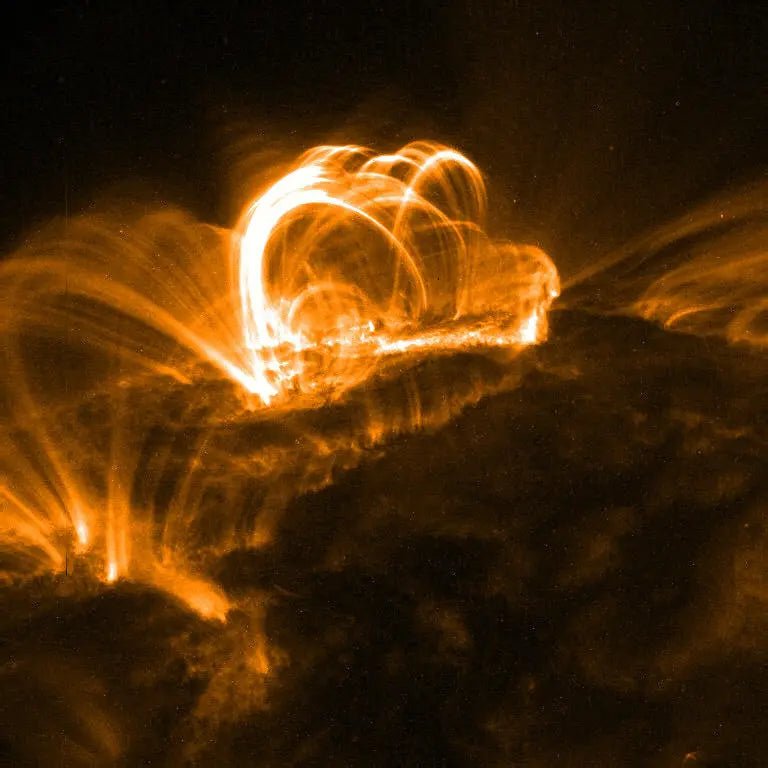Our Sun is not just a benign, glowing sphere in the sky that provides us with light and warmth. It is a dynamic, magnetic, and highly active celestial object capable of producing dramatic eruptions known as solar storms or coronal mass ejections (CMEs). These events have significant implications for Earth, affecting satellite operations, telecommunications, and even power grids. But what drives these solar tempests? To understand this, we need to delve into the complex physics underlying the Sun’s behavior.
The Basics: Solar Structure
The Sun is a massive ball of hot, ionized gas, or plasma. The key layers are the core, where nuclear fusion occurs; the radiative zone, where energy travels primarily through radiation; the convective zone, where convective currents of plasma move the energy outward; the photosphere, which is the visible surface; and finally, the outer atmosphere, composed of the chromosphere and the corona.
Magnetic Fields: The Driving Force
The Sun is a giant magnetic dynamo. Magnetic fields are generated in its interior, particularly in the convective zone. Convection currents of charged particles create loops of magnetic fields that stretch from the Sun’s interior into its atmosphere. Due to the Sun's differential rotation—where the equator rotates faster than the poles—these magnetic field lines get twisted and distorted. When the magnetic energy in these tangled field lines becomes too great, it can be released in the form of a solar flare or a CME.
Solar Flares vs. Coronal Mass Ejections
It's essential to distinguish between solar flares and CMEs, even though they are closely related and often occur together. A solar flare is an intense burst of radiation emitted from the Sun's surface and its outer atmosphere. In contrast, a CME involves a massive release of magnetized plasma into space.
The Physics of Coronal Mass Ejections
Magnetic Reconnection
One of the critical processes leading to a CME is magnetic reconnection. In this process, magnetic field lines from different regions are brought together and rearrange themselves, effectively "snapping" and "reconnecting" into a new configuration. This releases a tremendous amount of energy, propelling plasma outward at speeds that can reach several million miles per hour.
Plasma Instabilities
Various types of plasma instabilities can also contribute to CMEs. For instance, kink instability occurs when a magnetic loop becomes so twisted that it becomes unstable and disrupts its equilibrium, potentially leading to a CME. Another type, the torus instability, happens when an arched magnetic loop expands to the point where the magnetic forces can no longer hold it, allowing it to erupt into space.
Energy Accumulation and Release
The magnetic energy leading to a CME accumulates over a long period. Active regions on the Sun, known for intense magnetic activity, are often the birthplaces of CMEs. When the magnetic energy in these regions becomes too great, it needs to be released, resulting in a CME.
Implications for Earth
Coronal mass ejections can produce geomagnetic storms as they interact with Earth's magnetic field. These storms can lead to a range of effects on human-made systems:
1. Satellite Operations: The increased radiation and magnetic flux can interfere with satellite communication and navigation systems.
2. Power Grids: Geomagnetic storms induce electric currents in power lines, potentially damaging transformers and other components.
3. Radiation Exposure: High-altitude flights, especially those near the polar regions, may experience higher levels of radiation during solar storms.
4. Auroras: On a lighter note, the interaction of solar particles with Earth’s atmosphere leads to the beautiful displays known as the Northern and Southern Lights.
Conclusion
The physics behind solar storms and coronal mass ejections is a complex interplay of magnetic fields, plasma dynamics, and energy transformation. As our understanding of these processes deepens, we not only appreciate the grandeur and complexity of our Sun but also become better equipped to mitigate the impact of these solar events on our increasingly technology-dependent civilization.
Understanding and predicting solar storms and CMEs is not just a theoretical pursuit but a practical necessity, as our modern society becomes increasingly vulnerable to the far-reaching effects of these celestial phenomena.



Share:
Unveiling the Mysteries of Solar Storms
How to Freshen Up Your New Eclipse Glasses from Eclipse Glasses USA